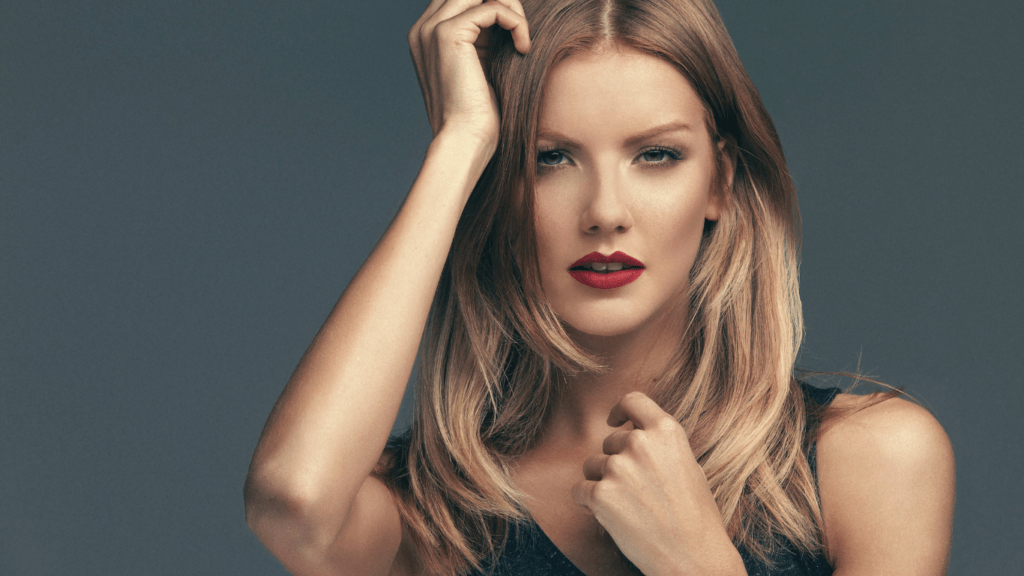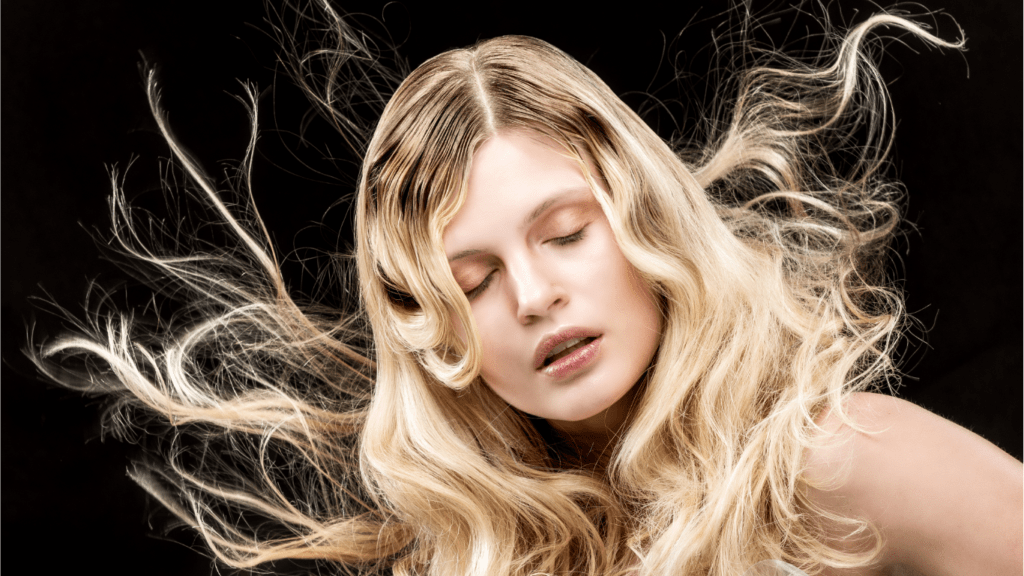Overview of Hair Painting Techniques
Hair painting techniques have revolutionized hair coloring by offering more natural and artistic results. Ombre and sombre lead the trend, creating seamless transitions between shades. These techniques add depth, dimension, and a sun-kissed glow.
Ombre fades color gradually from dark to light. It typically starts darker at the roots, transitioning to lighter ends. This method suits those wanting noticeable yet natural-looking changes.
Sombre softens the ombre effect. It transitions more subtly, featuring a less drastic contrast between shades. It’s perfect for a low-maintenance, natural appearance.
Other techniques include:
- Balayage: This freehand method highlights hair naturally. Stylists paint sections randomly for a sunlit effect. It’s ideal for soft, blended highlights.
- Flamboyage: Combines balayage and ombre. Stylists use adhesive strips to apply color, creating multi-dimensional, natural highlights.
- Babylights: Fine, delicate highlights mimic a child’s naturally sun-lightened hair. It’s great for a soft, subtle dimension throughout the hair.
Each technique enhances hair uniquely. Selecting the best method depends on desired outcomes and maintenance levels.
Ombre Hair Painting
Ombre hair painting has gained immense popularity due to its striking, gradient effect. This technique transitions hair color from dark roots to lighter ends.
What Is Ombre?
Ombre involves a gradual color change from darker roots to lighter tips. Stylists often use natural tones for a more blended look. For example, brown to blonde or black to caramel are common ombre transitions. It’s suitable for various hair lengths, providing a dynamic look whether hair is long or short.
Benefits of Ombre
Ombre offers several benefits:
- Low Maintenance: The natural roots mean fewer touch-ups.
- Versatility: Works with natural or bold colors.
- Dimension: Adds depth and volume, making hair appear fuller.
Additionally, ombre lasts longer than traditional highlights.
Ombre Tips and Tricks
For optimal results:
- Consult: Discuss the desired outcome with your stylist.
- Start Subtle: If unsure, begin with a subtle gradient.
- Condition: Use deep conditioners to maintain hair health.
If transitioning from dark to light, opt for gradual lightening to avoid damage.
Sombre Hair Painting
Sombre hair painting offers a softer, more natural transition than ombre. It’s popular for its subtle approach to adding depth and dimension.
What Is Sombre?
Sombre involves a gradual color transition that’s more delicate than ombre. Hair color transitions from dark roots to slightly lighter ends. Unlike the distinct contrast of ombre, sombre creates a more blended, sun-kissed effect. This technique suits those wanting a natural look with soft, flowing gradients.
Benefits of Sombre

Sombre provides numerous advantages:
- Low Maintenance: Frequent touch-ups are unnecessary, making it perfect for busy individuals.
- Natural Appearance: The subtle gradient closely mimics natural hair-lightening patterns.
- Versatility: Effective on different hair colors and textures.
- Dimension: Adds depth and movement to hair with its gentle transitions.
- Consult with a Stylist: Professional guidance ensures the gradient suits natural hair color.
- Start Subtle: Begin with a slight color difference to avoid drastic changes.
- Use Quality Products: Maintain hair health with deep conditioners and color-safe shampoos.
- Protect Your Hair: Limit heat styling to preserve the color and health of your hair.
- Regular Trims: Schedule trims to keep ends healthy and prevent split ends.
Balayage Hair Painting
Balayage, a popular hair painting technique, achieves a natural, sun-kissed look. It’s favored for its ability to add depth and dimension.
What Is Balayage?
Balayage involves hand-painting highlights onto the hair. Unlike traditional highlighting methods, balayage focuses on freehand strokes, which create a softer and more natural-looking gradient. This technique gives the appearance of naturally grown-out, lighter hair. Typically, it’s applied to the outer layers of hair, leaving the roots darker and the ends lighter. This creates a seamless blend.
Benefits of Balayage
Balayage offers several benefits. It requires less maintenance compared to traditional highlights since it grows out naturally without harsh lines. This means fewer touch-ups, making it cost-effective and time-saving.
Because it’s customizable, balayage suits all hair types and colors, from blonde to brunette. It also enhances the overall texture and depth of the hair, giving it a fuller and more voluminous appearance. Additionally, it’s less damaging as it doesn’t involve saturating hair with bleach.
Balayage Tips and Tricks
Here are some tips to achieve the best balayage results. Always consult an experienced stylist who specializes in balayage for professional advice. Use salon-quality hair care products to maintain color and health.
To protect hair from damage, minimize heat styling and use heat protectants. Schedule regular trims to keep ends healthy. For a more subtle effect, start with a few highlights and gradually add more in subsequent sessions.
By incorporating these techniques and tips, balayage can transform your hair into a beautiful, natural-looking masterpiece.
Other Notable Techniques
Numerous other hair painting techniques exist beyond ombre and sombre, offering diverse styling options. Here are some popular methods:
Splashlights
Splashlights produce a halo effect, illuminating a horizontal band of hair. This technique involves applying a bright color to a strip of hair across the head, usually around ear level. Splashlights work best on straight hair for maximum visual impact and are ideal for those desiring a bold, eye-catching style.
Dip Dye
Dip dye gives a dramatic, two-tone appearance by coloring the ends of the hair a different shade. Stylists usually achieve this look by applying vibrant or pastel colors to the lower portion of the hair without blending. Dip dye suits those seeking a striking contrast and works well with natural hair colors and vivid hues.
Color Melting
Color melting merges various shades into a seamless blend. Experts apply multiple colors, transitioning smoothly from one to the next. This technique offers a soft, gradient effect with no harsh lines. Color melting is perfect for those wanting a subtle yet dynamic color transformation and can be customized for different hair shades and styles.
Choosing the Right Technique for You
Selecting the perfect hair painting technique depends on various factors, including hair type, lifestyle, and personal preferences. I always recommend considering these elements before committing to a specific style.
Hair Type
Different hair types react uniquely to various techniques. For example:
- Fine Hair: Balayage enhances fine hair with added dimension without weighing it down.
- Thick Hair: Ombre provides a bold look, making it ideal for thicker textures.
- Curly Hair: Sombre complements curly hair by adding subtle gradients that blend seamlessly.
Lifestyle
Your daily routine and maintenance preferences influence the choice of technique. Consider these points:
- Low Maintenance: Balayage and Sombre require fewer touch-ups, making them ideal for busy individuals.
- Frequent Changes: Dip Dye suits those who enjoy experimenting with colors since it allows easy updates.
- Professional Environment: Ombre and Color Melting offer a sophisticated yet stylish look suitable for professional settings.
Personal Preferences
Your desired look and comfort with boldness play a crucial role. Reflect on these aspects:
- Natural Look: Balayage offers a sun-kissed, natural appearance perfect for a subtle change.
- Bold Statement: Splashlights create a striking halo effect, great for making a visual impact.
- Seamless Transition: Color Melting ensures a smooth blend of shades for those preferring a gradual transition.
Analyze these factors to find the technique that aligns best with your hair type, lifestyle, and desired appearance.



 Men’s Hair Care Specialist & Author
Araceline is a unique and valuable contributor, bringing her expert knowledge of men’s hair care and grooming trends. As an experienced author, she shares her deep understanding of hair painting, coloring techniques, and the specific needs of men’s hair. Araceline’s articles are both informative and engaging, offering men practical advice on maintaining stylish, healthy hair.
Men’s Hair Care Specialist & Author
Araceline is a unique and valuable contributor, bringing her expert knowledge of men’s hair care and grooming trends. As an experienced author, she shares her deep understanding of hair painting, coloring techniques, and the specific needs of men’s hair. Araceline’s articles are both informative and engaging, offering men practical advice on maintaining stylish, healthy hair.
